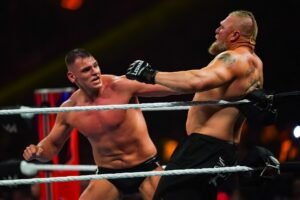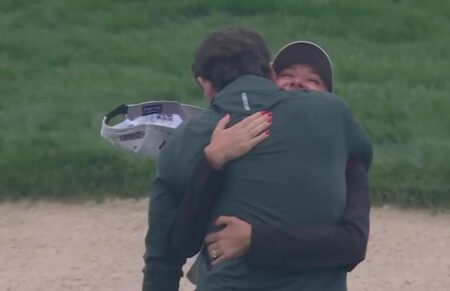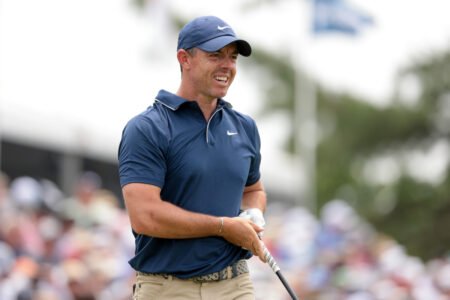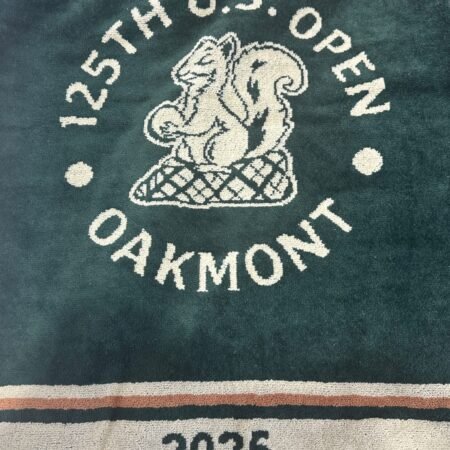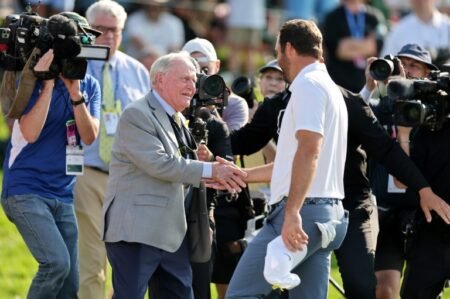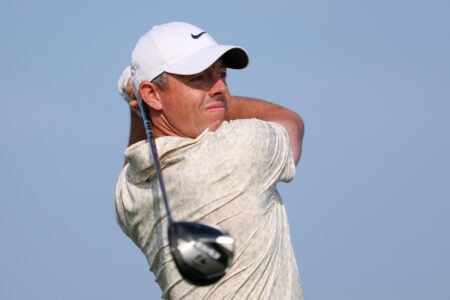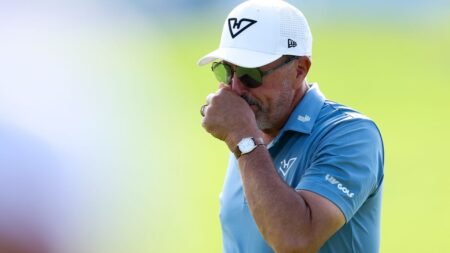Winning at Oakmont Will Require Luck on the Weekend originally appeared on Athlon Sports.
After two days of watching the 125th U.S. Open at Oakmont Country Club, luck comes to mind.
How lucky you must be to win a U.S. Open at Oakmont.
In the lead-up to the tournament, the discussion was about how challenging the golf course can be, and for all intents and purposes, that has come to pass.
Only three players — Sam Burns, J.J. Spaun and Norway’s Viktor Hovland — are in red numbers after 36 holes.
That in itself is not unusual, but what is unusual is the players who didn’t make the cut at 7-over, which included Sweden’s Ludvig Aberg, Wyndham Clark, Patrick Cantlay, Lucas Glover, Cam Smith, Tommy Fleetwood, Bryson DeChambeau, Sepp Straka, Justin Thomas, Justin Rose and Shane Lowry.
Dig deeper and you find that Triston Lawrence from South Africa started the day at 3-under and jumped to 6-under after his first four holes in the second round.
Starting on the back nine and standing on the 14th tee with a three-shot lead, the 28-year-old imploded, making four bogeys over the next five holes and turning at 1-over 36.
After a birdie on the first hole, his 10th, Lawrence again went in the wrong direction with two bogeys and a double-bogey, falling from 6-under to 1-over in nine holes. This is where he stood when play was suspended for the day because of weather, with Lawrence on the 18th green.
A player can point to a lucky or unlucky break or bounce in every case above or below the cut line.
It seems that Oakmont requires more positive breaks or bounces to survive 72 holes and hoist the trophy on Sunday.
On Wednesday, the USGA proudly told the assembled media that it wanted players to get all 14 clubs dirty and use the 15th club — the space between their ears.
On Friday, after making the cut, the U.S. Ryder Cup captain took exception to the statement.
“I think that the USGA can say all they want, but we’re professional golfers. This is what we do for a living. I don’t agree with that,” Keegan Bradley said of the USGA’s pronouncement. “I think that we go out here every day and try to be professionals, and we know when it comes to a major, whether it’s a U.S. Open, British Open, Masters, PGA, that we have to be on top of our game mentally. The USGA is not doing that; we’re doing that.”
Yet, Oakmont is set up to get into every player’s head and to exaggerate the need for luck.
How much luck do you need, Scottie Scheffler was asked.
“I mean, in any tournament I think there’s a matter of luck when it comes to competing, and sometimes you get those little bitty breaks that kind of help propel you, maybe it’s chipping here, maybe you hole a long putt, something like that, but luck is always a factor in the game of golf.”
Scheffler didn’t say luck is more of a factor at Oakmont than when he won at the Memorial two weeks ago, but watching the field of 156 try to navigate around the 18 holes, it is clear that luck and more than usual will be required over the next 36 holes.
Related: Scheffler Still Has a Chance at Oakmont
Related: Patrick Reed Shoots a Double-Eagle in First Round of U.S. Open
This story was originally reported by Athlon Sports on Jun 14, 2025, where it first appeared.
Read the full article here
